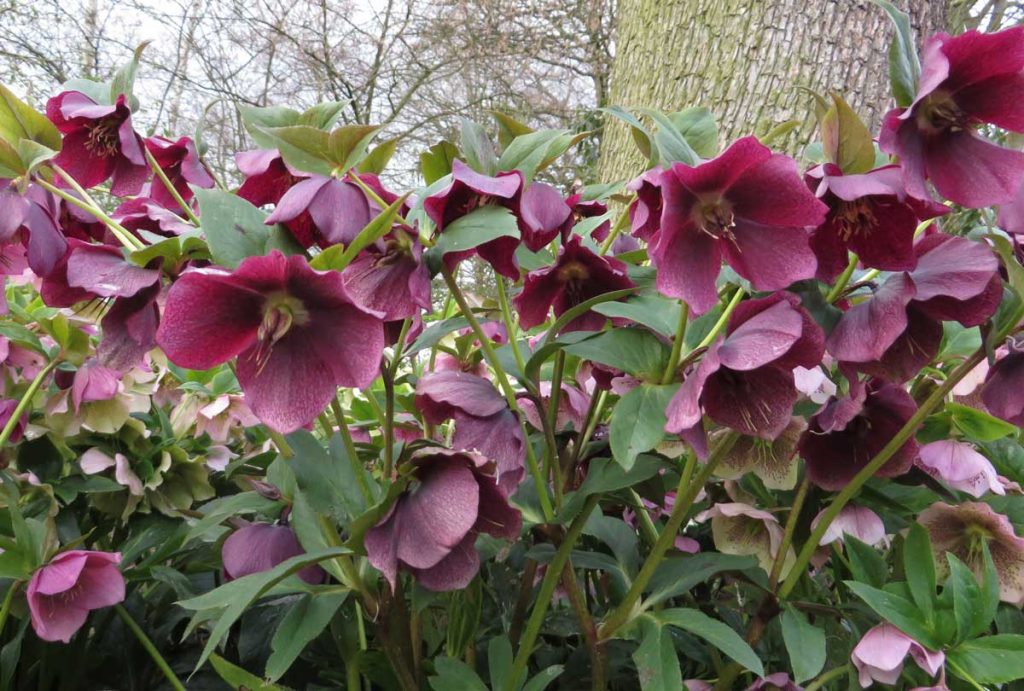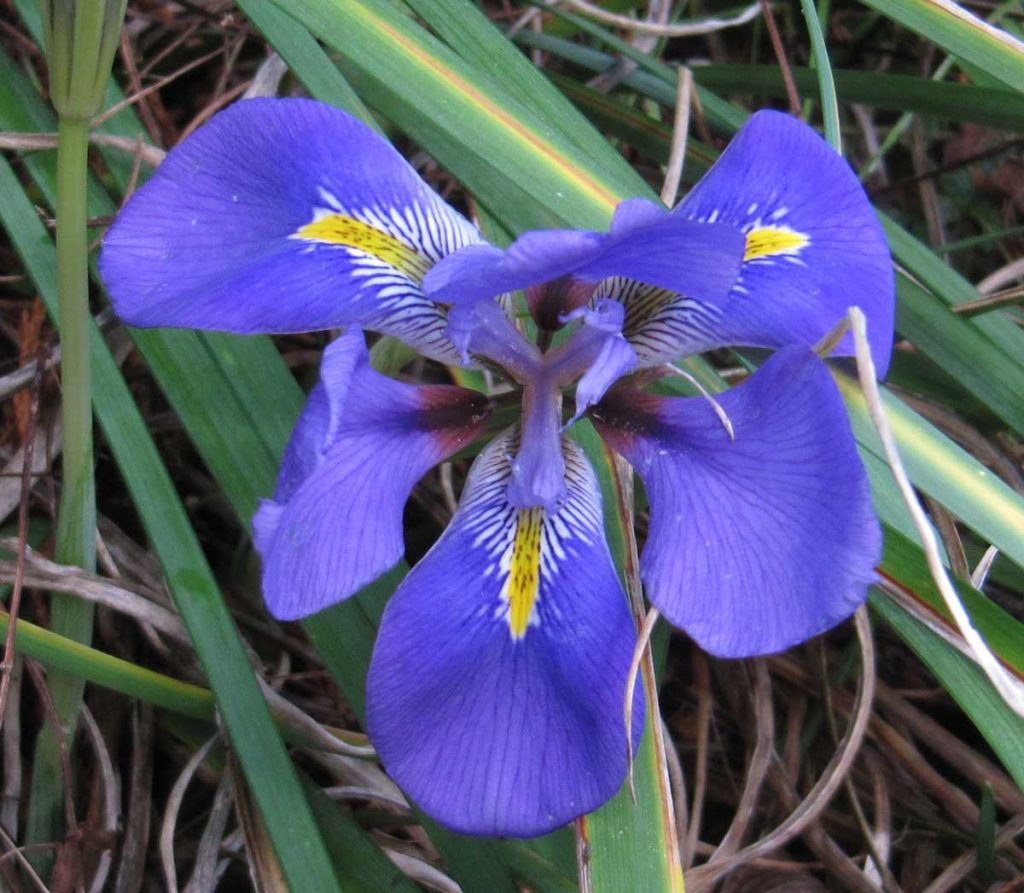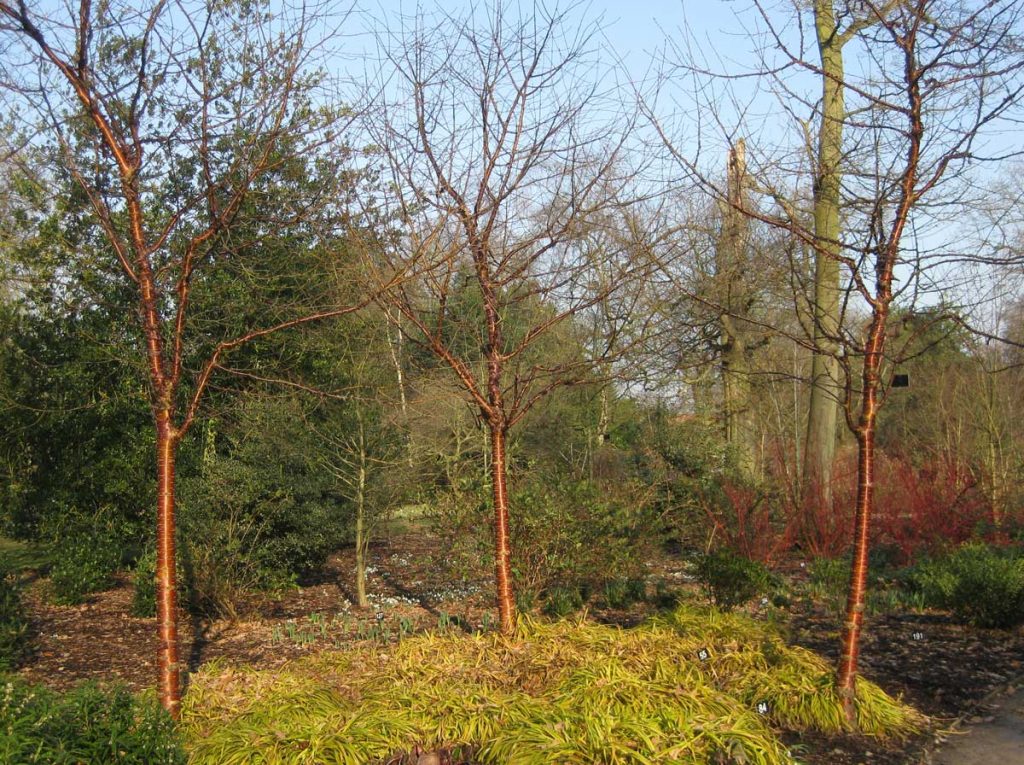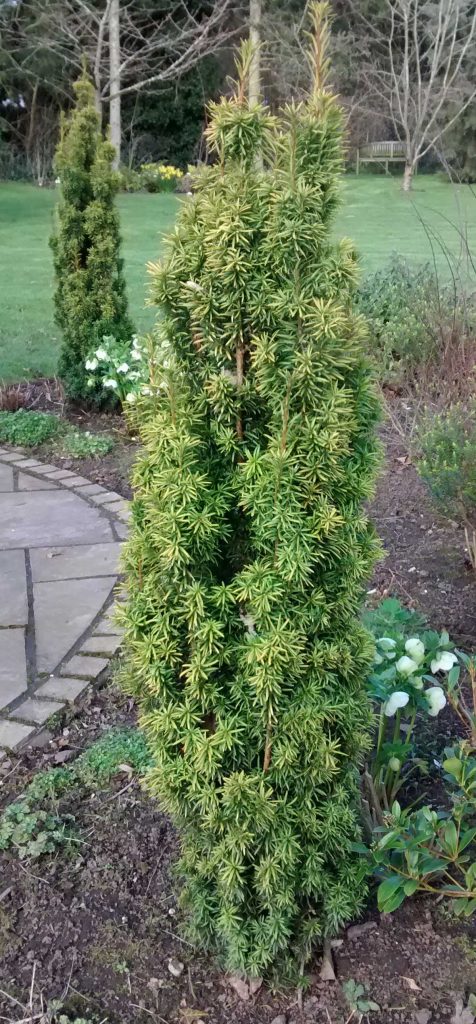January is a difficult month to find colour in the garden so take time to appreciate the shape of plants and the colour from evergreens and tree bark.
One January flowering plant, is Hellebore orientalis which is a winter flowering perennial with pink, plum, white and speckled flowers about 5cm in size. In time, a single plant can grow to produce dozens of flowers over winter, then the seeds can set to give you many more plants. They prefer a loamy or clay soil and thrive in shady places. Hellebores do well under deciduous shrubs and will give you a carpet of colour in winter. Interplant with spring bulbs. Do remember to cut off most of their leaves in early winter so you can see the flowers. Always wear gloves when handling as the sap can cause vomiting if ingested in even small amounts.

An odd sight to see in winter is the Iris unguicularis Mary Barnard. Delicate iris flowers in blue pop up from a tangle of grassy leaves. Cut the leaves back to reveal the flowers. They look like a spring flower but grow in the depths of winter.

The combination of colour from bark can be dramatic in low winter sunshine as you can see from the photo taken at Dunham Massey winter garden. There are three Prunus serrula trees planted so that the sunshine touches the glossy copper bark (so smooth to the touch!). Behind is planted a stand of Cornus or Dogwood with bright red stems. I like the variety Cornus alba Variegata or Elegantissima. This has the benefit of red stems in winter and green and creamy leaves in summer. Cut the stems down in February every other year to get a lot of stems or let it grow into a large shrub. They prefer moisture retentive soils in sun.

Finally, may I suggest the evergreen columnar yew, Taxus baccata Standishii with neat upright growth and golden needles in summer, fading to light green in winter. A line of these golden evergreen columns interplanted with lavender or linking a low box hedge always looks attractive.

Work to do in your garden is limited but you can start pruning apples and pears and wisteria. Prune redcurrants and gooseberries by shortening longer branches by a third at most, cut out overlapping stems and any growing near the soil. Plant out any bare rooted plants you have ordered as soon as they arrive. Do not walk on frozen soil or grass – go indoors and admire your hellebores from a warm room!
